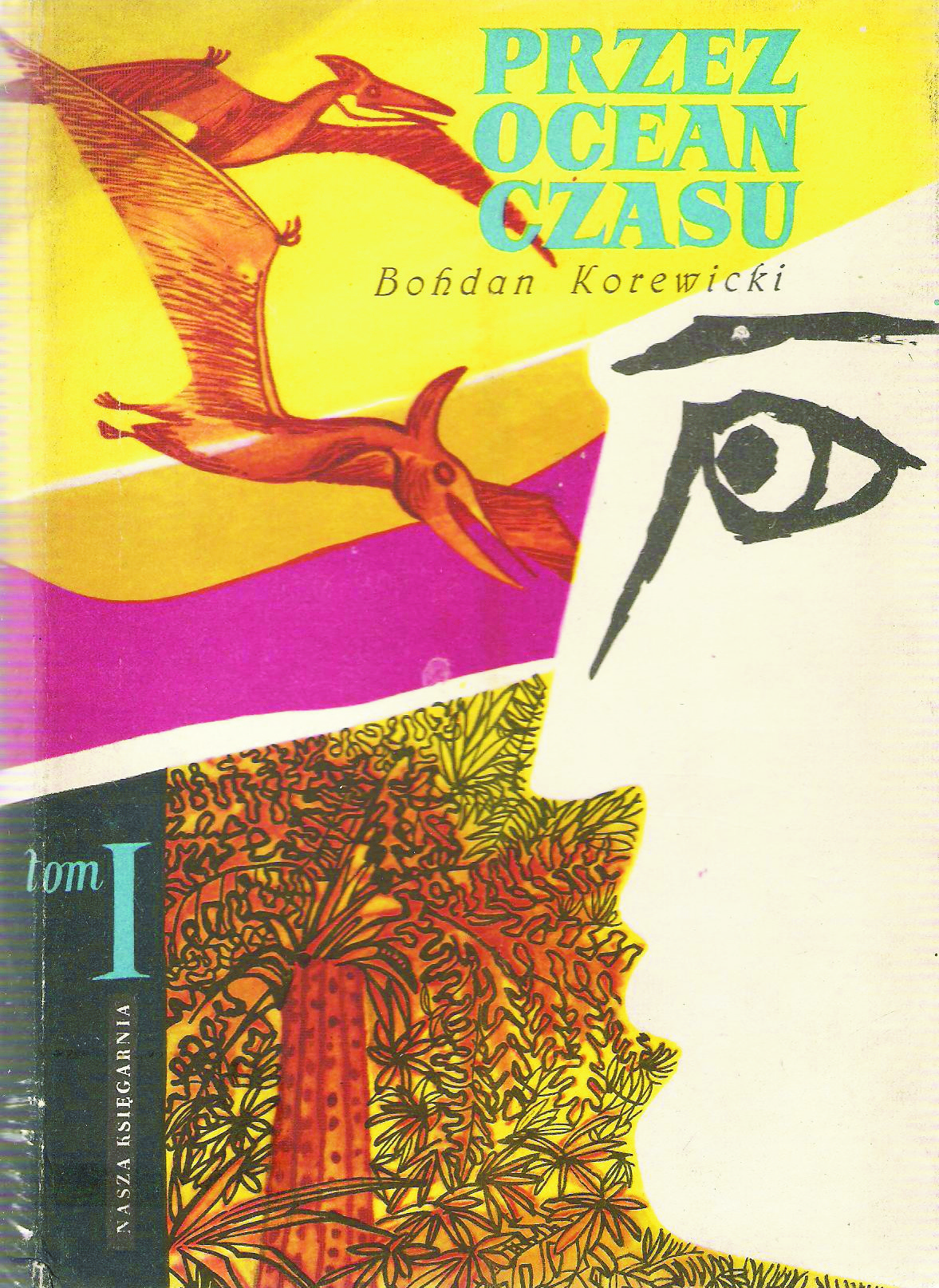Title of the work
Country of the First Edition
Country/countries of popularity
Original Language
First Edition Date
First Edition Details
Bohdan Korewicki, Przez ocean czasu. Tom 1. Warszawa: Nasza Księgarnia, 1957, 424 pp.
Bohdan Korewicki, Przez ocean czasu. Tom 2. Warszawa: Nasza Księgarnia, 1957, 369 pp.
ISBN
Genre
Novels
Science fiction
Time-travel fiction
Target Audience
Young adults
Cover

Courtesy of Nasza Księgarnia.
Author of the Entry:
Helena Płotek, University of Warsaw, helenaplotek@student.uw.edu.pl
Peer-reviewer of the Entry:
Katarzyna Marciniak, University of Warsaw, kamar@al.uw.edu.pl
Elżbieta Olechowska, University of Warsaw, elzbieta.olechowska@gmail.com

Photograph by Nickt01, retrieved from Wikimedia Commons (accessed: September 16, 2022).
Bohdan Korewicki
, 1902 - 1975
(Author)
Born January 2, 1902 in Nasiekówka in Podolia (south–eastern Poland until WW2, then USSR, and now Ukraine); died January 8, 1975 in Warsaw. Between 1921 and 1924 studied at the Wojciech Gerson School of Drawing, graduating in 1926. In addition to painting he studied singing under Tadeusz Leliwa and Umberto Macner, instrumentation and harmony under Ludomir Różycki. In 1925/1926 he was a soloist at the Opera of the United Pomeranian Theatres Bydgoszcz–Toruń–Grudziądz. He performed for example a solo part in Stanisław Moniuszko’s Straszny Dwór [The Haunted Manor]. His paintings were exhibited at the Zachęta Gallery (Society for the Encouragement of Fine Arts) in Warsaw between 1933 and 1937. During the German occupation of Poland he worked in the resistance and after the Warsaw Uprising was captured and deported to Germany, to the Braunschweig labour camp. There he organized shows of drawings and lead an amateur theatre troupe. He returned to Poland in 1946; between 1947 and 1948 he worked at the still functioning (until 1948) Ludowy Instytut Oświaty i Kultury [People’s Institute of Education and Culture], in Warsaw. In 1948 he worked for the Propaganda Division of the Polish Red Cross and later he sang for the Polish Radio and in the choir of the Warsaw Philharmonic. He also dabbled in photography and belonged to the Warsaw Photographic Association. He wrote two science fiction books: a two–volume novel Przez ocean czasu [Through the Ocean of Time], 1957, and Jej perypetie. Powieść trochę niesamowita [Her Adventures. A Somewhat Incredible Novel], 1958.
Source:
"Bohdan Korewicki", in Andrzej Niewiadomski and Antoni Smuszkiewicz, Leksykon polskiej literatury fantastycznonaukowej, Poznań: Wydawnictwo Poznańskie, 1990, 111–112.
Bio prepared by Helena Płotek, University of Warsaw, helenaplotek@student.uw.edu.pl
Summary
Based on: Katarzyna Marciniak, Elżbieta Olechowska, Joanna Kłos, Michał Kucharski (eds.), Polish Literature for Children & Young Adults Inspired by Classical Antiquity: A Catalogue (accessed: June 11, 2021), Faculty of “Artes Liberales”, Warsaw: University of Warsaw, 2013, 444 pp.
High school graduate, Dominik Konarski strolls through the woods and meets a group of unusually dressed strangers. They ask him for the current date and invite him to see their time machine; shortly after that they ask him to join them in their time travels. It turns out that they are scientists from the future, from Warsaw in the year 2048 to be precise. They want to travel back in time to prehistoric times. Dominik at first hesitates but finally joins them. Their vehicle not only travels through time but it also travels on land and water. Its maximum speed through time is 90 years per second. They travel back 150 million years witnessing various prehistoric periods such as: glacial, interglacial, and tertiary. At the end they reach the Early Cretaceous era. During their adventures they meet many strange creatures, for example Neanderthals, Australopithecus and mammoths among others. They survey with wonder the ancient deserts and primordial forests.
In Early Cretaceous era they meet various species of dinosaurs and they even have a dangerous encounter with a Tyrannosaurus Rex. Their journey is full of trials: the time machine breaks, the crew fall sick, and they have to face the hazards of ancient natural forces.
After researching the prehistoric eras the scholars plan to get back to the 21st century. In a surprising turn of events the machine runs out of mercury and is unable to travel through time with precision. Travelling blind through time they end up in ancient Rome during the reign of Emperor Trajan. Dominik along with another crewman Ernest Segar decide to find the desperately needed mercury. They spend the gold they found in prehistoric eras to buy the mercury from an astronomer in Ostia and return to the 21st century.
Analysis
Because the book was written for young adults the author used the character of the inexperienced Dominik as an audience surrogate, who needs to have difficult scientific issues and concepts explained to him in terms accessible to a layman. The book is full of paleo-archeological information and is in many ways reminiscent of Julius Verne’s novels.
The crew of the time machine is forced to make a sudden stop on their way home. They find themselves in Rome during the Emperor Trajan’s reign. Dominik and Ernest make their way to Ostia in order to find mercury without which the time machine would not be able to get back to the 21st century. During the two-day trip they observe the daily life and customs of average Romans. Dominik notices a slave driver and decides to buy from him a young slave girl, Deutera, and give her back her freedom. They cannot take her back to the 21st century and they decide to reunite her with a sister who lives on Crete. From there they make their way back to the 21st century.
Further Reading
Niewiadomski, Andrzej and Antoni Smuszkiewicz, Leksykon polskiej literatury fantastycznonaukowej, Poznań: Wyd. Poznańskie, 1990.
Raszewski, Zbigniew, ed., Słownik biograficzny teatru polskiego 1765–1965, Warszawa: PWN, 1973.
Wernerowa, Jadwiga, "Prawo serii", Nowe Książki 18 (1957): 1127–1128 [book review].


